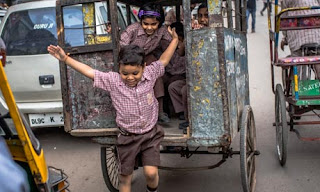[MLE] ECCE- Article: The Word and the World

Dear MultiLingual Education friends, Against the backdrop of the new Early Childhood Care and Education policies Prof Shivali Tukdeo recently wrote an article in the Indian Express titled The Word and the World . A few quotes: The inclusion of home or local languages in preschool is a step in the right direction, for educational as well as social reasons. Evidence-based studies on early childhood and research in educational psychology and cognition suggest that exposure to multiple languages can facilitate early development. Given the interactive nature of early learning, home languages and local vernaculars would be excellent resources to introduce the child to the rhymes, rhythms and stories of a world that she inhabits. With the inclusion of mother tongues and local vernaculars in preschools, many neighbourhoods and localities,



